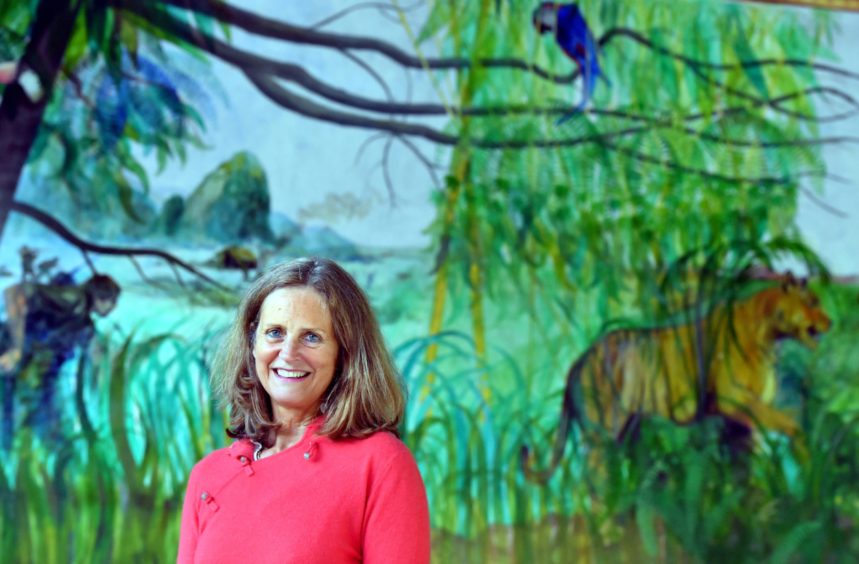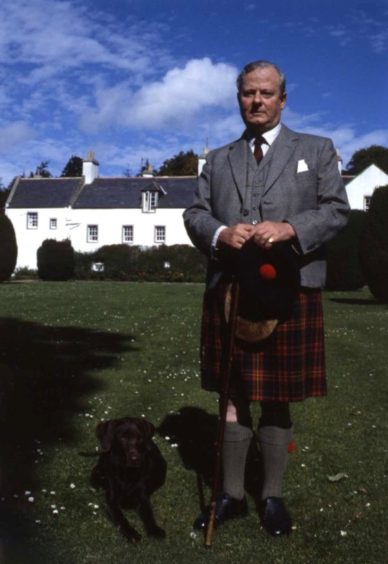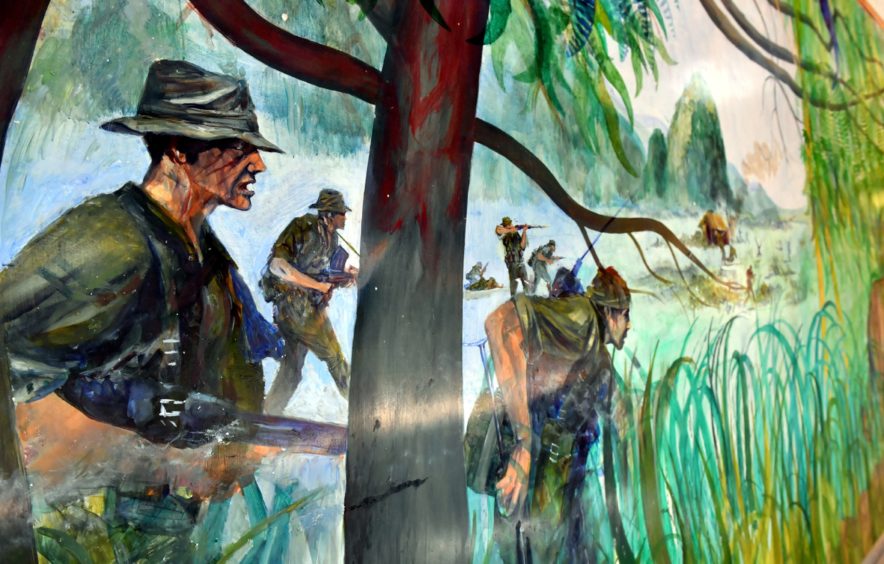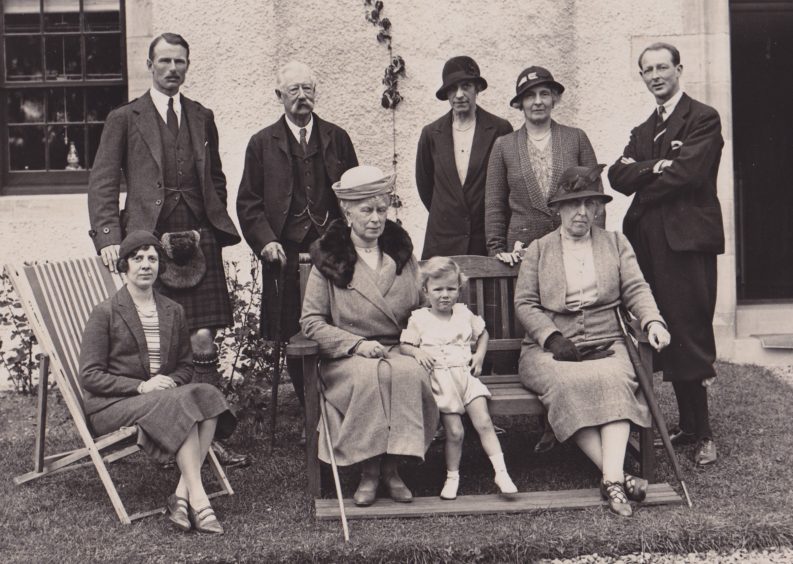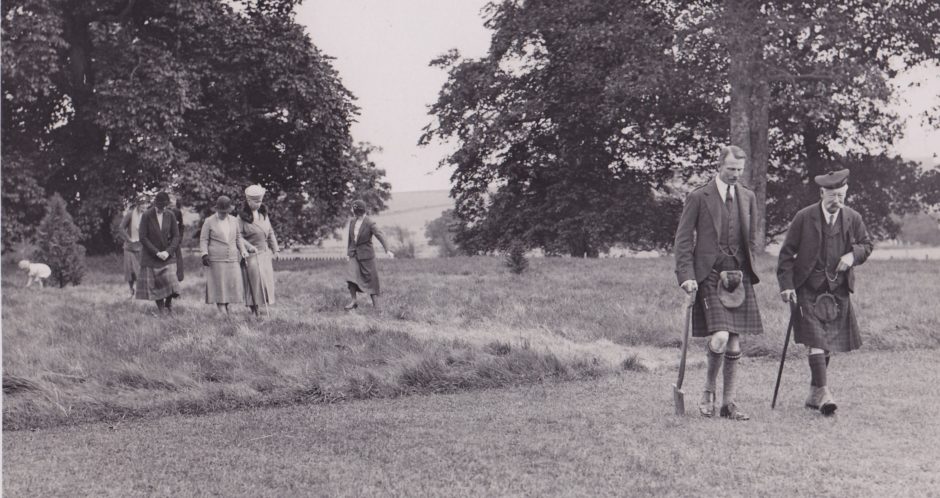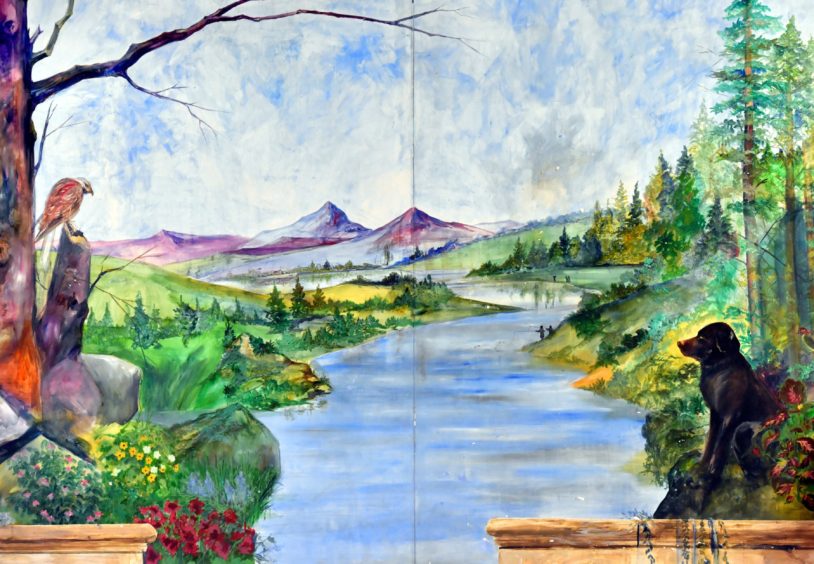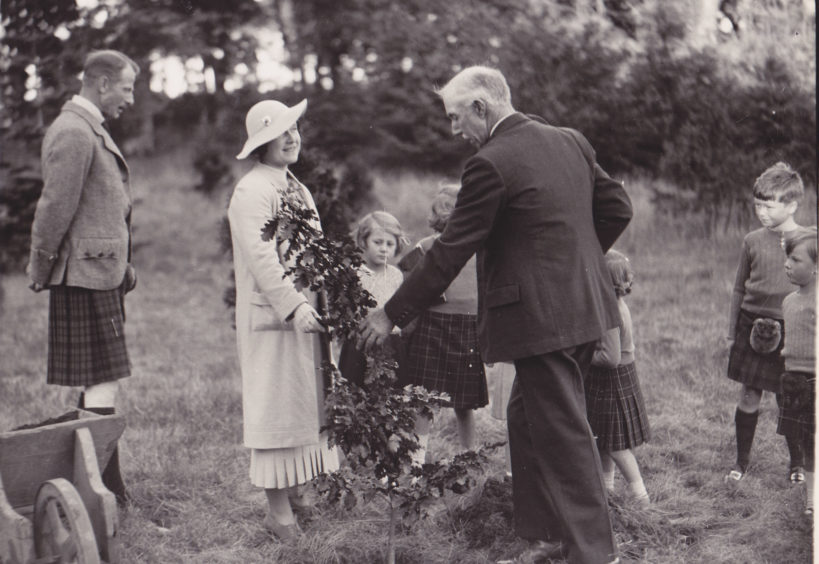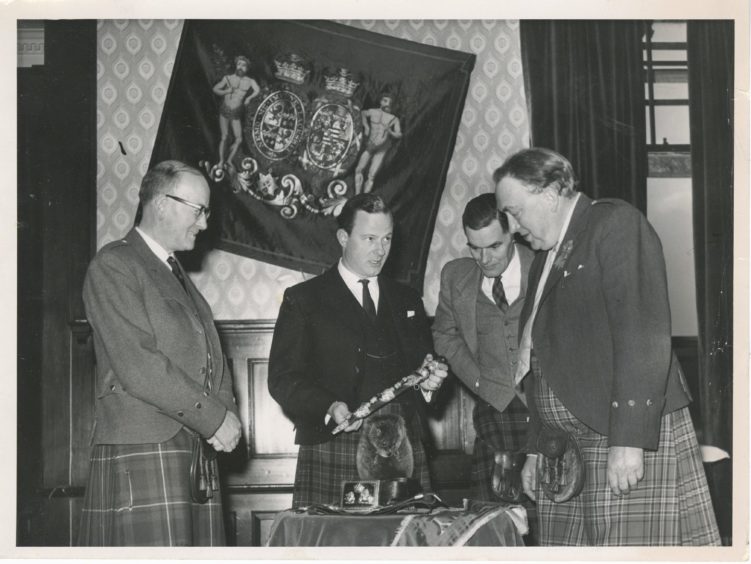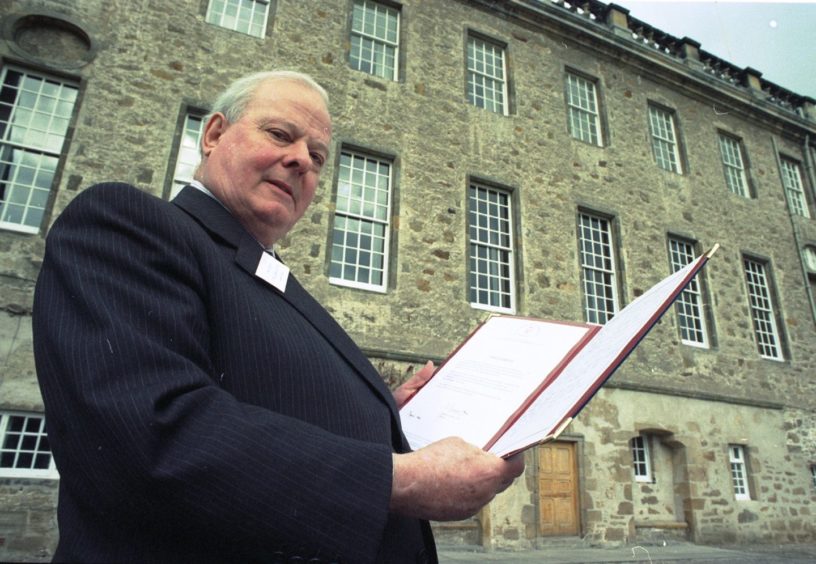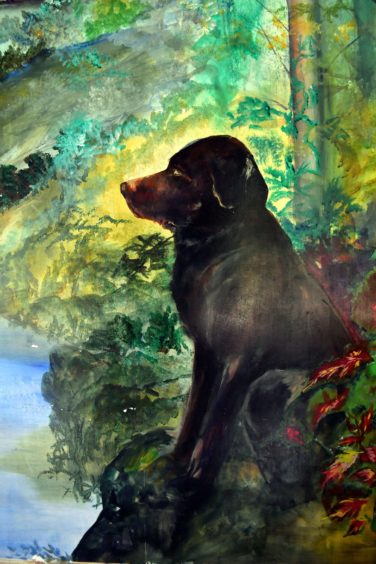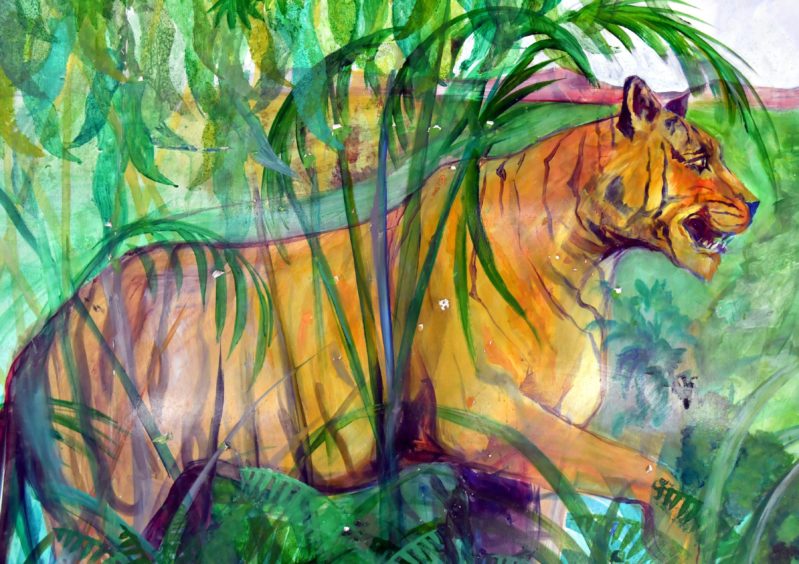There are several portraits of the 3rd Duke of Fife, but his family’s favourite is an unusual one, a hidden mural in a grand north-east house – and he’s not even in it.
But the painting around the now disused swimming pool of Elsick House at Cammachmore, near Stonehaven, is cherished by the late Duke’s loved ones as a fitting tribute to his life, said his daughter-in-law, Caroline, Duchess of Fife.
“He has left us with a few portraits as well, but I wouldn’t say any of them are our favourites, but this definitely is. It has a whole life to it. It’s full of fun and colour and wackiness,” she said.
Elsick House’s secret mural
Caroline said the mural came around in typical fashion for the Duke, a second cousin to the Queen who grew up with the young Princesses Elizabeth and Margaret, and had a playful, impetuous streak that led to him being known as a “naughty boy”.
“It was commissioned by my father-in-law about 30 years ago at least. He had an artist staying with him, with two other friends, and he said he wanted this whole swimming pool area cheering up.
“He said ‘come on, let’s do this’ and they said ‘fantastic’,” said Caroline, adding the work was completed in about a week.
“And he wanted to record different elements of his life. So it has elements which are recognisable, but it’s quite surreal at the same time. You have a mix of tigers in with Malayan jungle, parrots and then a bit of Scottish scenery to break it all up,” said Caroline, adding the mural included the family’s homes.
“It’s very wacky and stylised, but it works and it’s fun,” she said.
The life of a Duke
James George Alexander Bannerman Carnegie, who passed away five years ago, was born in 1929 and was the grandson of Louise, Princess Royal, a daughter of King Edward VII and Queen Alexandra.
He initially attended school in Stonehaven, then eventually Gordonstoun. He did his National Service with the Scots Guards in Malaya, in 1948, as portrayed in the Elsick House mural.
“He wasn’t an academic and didn’t pass the exams to be an officer”, said Caroline. “At the time he was about seventh in line to the throne. It was a big deal when he went into the Scots Guards as a guardsman. He would have to line the Mall, when the rest of his family were coming down in grand coaches.
“He made the most of it and was a driver to one of the generals in Malaya. But he said it was the most scary time, going through the jungle. It was full of discomforts for all of the Scots Guards out there.”
After his time in the Guards, he studied land management and was content to lead a quiet life overseeing the management of his estates and spent many happy years at Elsick House, one of his family’s homes.
The Duke loved Elsick. He was here the whole of his life until the end.”
“He loved Elsick, he just loved it here,” said Caroline. “He was here, really, the whole of his life up to the end.”
A royal childhood
As a child, the Duke’s strong connections with the royal family meant he was often at Balmoral for family celebrations and royals were frequent visitors to Elsick House, including Princess Elizabeth who attended birthday parties there.
“Queen Mary was an absolute regular here and so was the Queen Mother,” said Caroline.
Not that that curtailed the Duke’s mischievous streak.
“He was a naughty boy,” said Caroline. “We have lots of trees that were planted here by members of the royal family when they came. There’s one lovely picture of them walking away having planted the tree, and you can see my father-in-law, who must have been three at the time, with his bottom in the air, digging up what had just been planted.”
The Queen was also a regular visitor from Balmoral as a child and they frequently played together.
“She also would say she knew my father-in-law as a very naughty boy,” said Caroline.
But did he ever get the young Princess into trouble?
“He never admitted to it, but I think she’s too wily for that. She could have seen anyone coming.”
Caroline said her father-in-law’s playful mischief was understandable.
“He wasn’t an academic in any way and I think was a disappointment in terms of that to his father. He lost his mother when he was 13, so he was a little bit lost. He made up for that by just being naughty. He drew attention to himself with all sorts of pranks. He continued in that vein for his whole life. Even at the end, when he had carers, he would poke and weasel and make sure he put something wicked in the whole scheme of things.
“He always had a twinkle in that way.”
However, being naughty did have repercussions for him.
“He used to take great pleasure in annoying the butler when he was a smallish boy,” said Caroline. “He used to let the tyres down on his bike so he couldn’t get home at the end of his day.
“After a while this really got to the poor butler. He just ‘accidentally’ shut the door on him in the silver safe. I think it had a lasting effect on him and he was terrified thereafter of all small spaces.”
For all his pranks, the Duke cut a dashing figure in his youth.”
It led to a quirk in Elsick House, now a venue for weddings, holiday lets and private functions. Its cupboards and even silver safe have panic alarms inside… installed by the Duke, just in case he ever became stuck again.
Handsome and impressive
For all his pranks, the Duke cut a dashing figure in his youth. Handsome and impressive in his full dress kilt, he was often photographed with a beautiful woman on his arm.
One of his lifelong passions was motor-racing and fast cars. He drove a Bentley in the Monte Carlo Rally in 1955.
The Duke was also involved in the identification of the remains of Tsar Nicholas II. Lord Fife’s maternal grandmother, Queen Alexandra, and Nicholas’s mother were sisters, and the Duke’s DNA proved that the bodies found outside Ekaterinburg after they had been shot by partisans were authentic.
But the Duke himself was unassuming, said Caroline.
“He was a very shy man, a very generous man,” she said.
He was involved in local affairs and devoted much of his time to helping various Scottish institutions, including the Braemar Gathering.”
“He was involved in local affairs and devoted much of his time to helping various Scottish institutions, including the Braemar Gathering, upholding a long-standing family connection with the event. ”
The 12-acre site of the event was originally donated by the Duke of Fife in 1906 and it is still known as the Princess Royal and the Duke of Fife Memorial Park.
The Duke was appointed a vice-president of the Gathering in 1959 and maintained a close interest in various aspects of the organisation.
A family affair
Caroline said the mural, which spans the entire length of one wall of the pool, features all three family homes which the late Duke knew and loved.
That included not only Elsick House, but also Kinnaird Castle, near Brechin, as well as the ancient Farnell Castle, also near Brechin.
“It is very old. Edward I stayed there in the 1200s and it was the palace for the Bishops of Brechin. It then came into the family in the 14th century. It’s sort of next door to Kinnaird,” said Caroline.
The stylised painting also includes the Duke’s much-loved dog, Louis. “He was very badly behaved,” said Caroline.
“He wasn’t known for his love of exercise, my father-in-law. His idea of going for walkies was to get into the Land Rover with the dog in the passenger seat and go for ‘walkies’ like that.”
There can’t be many Dukes who have a mural dedicated to their lives. But it’s a fitting tribute to the man, said Caroline.
“He absolutely loved it,” she said. “Every day he would be in checking it out.”
However, after looking at the painting for a few minutes, it becomes clear something is missing: The Duke. He is completely absent from his own mural.
“That says everything about his character,” said Caroline. “He was always wanting to be out of the limelight. He was an incredibly generous man, but didn’t want to be the focus of attention ever.
“He was very shy, so it’s very fitting that he isn’t in this picture.”
